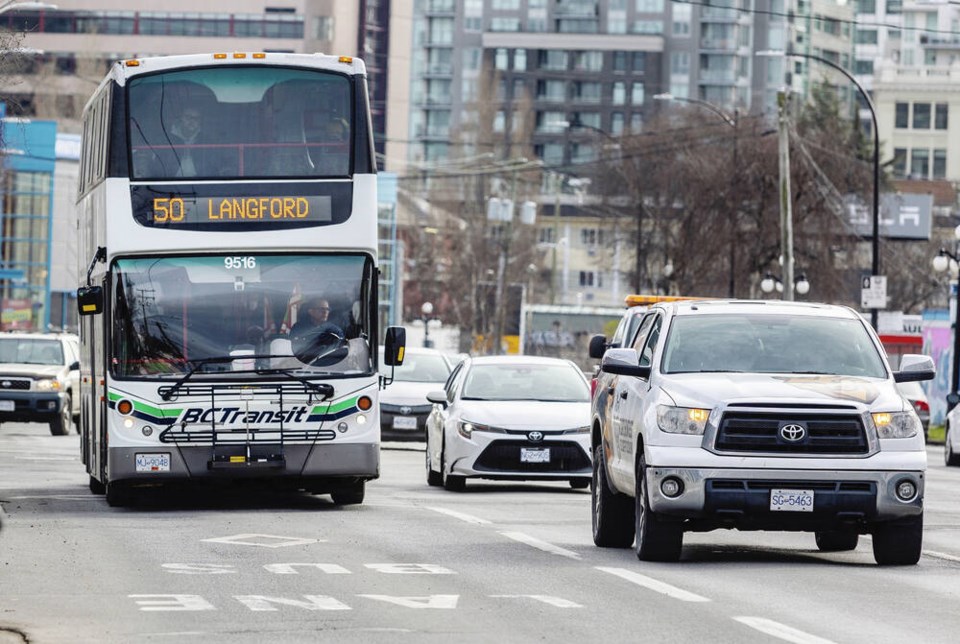One day while on our post-retirement world tour, my wife and I ended up in Roanoke Virginia. We spotted a restaurant that looked suitable about a block and half from the front lobby of our hotel and agreed that once we settled in we’d walk over for dinner.
That was the plan — all good except for the part about being able to walk there. Getting there by foot involved climbing over traffic islands, walking through roadside plant beds and cutting across lawns on private commercial buildings.
There were no sidewalks. Zero. Zip. Zilch. Luckily it was early evening so the light was still good and traffic volume had died away. It would have actually been easier to jump back in the car and drive the 300 or so metres to the restaurant parking lot, which needless to say, was full of cars.
I mentioned to the host how difficult it was to simply walk to the restaurant from our hotel. While sympathetic she was equally matter-of-fact: “Yeah, nobody walks around here.”
I thought of that the other day while watching a guy taking his life in his hands by trying to cross six lanes of Douglas Street near Queens. It also reminded me of an article I read a while ago by Chuck Marohn, the founder of a non-profit called Strong Towns, which aims to make cities and towns better and safer places to live.
In an article entitled: Confessions of Recovering Engineer, Marohn categorizes that type of broken urban design we found in Roanoke as a “stroad” — a combination of street and road. A street abounds with multiple uses — pedestrian, commercial and vehicle use. A road is for the fast, efficient movement of vehicles with production and economy being top of mind. Stroads somehow manage to fail on both accounts.
That guy on Douglas showed me we have some stroad problems around here, too.
Stroads require a few elements:
• They are unsafe, especially for pedestrians. That’s because they are generally wide-multi lane affairs which allow cars to proceed at 50 km/h or more. That makes them difficult to cross while allowing traffic to speed at a rate which can cause severe injury when striking pedestrians;
• They are “aesthetically repugnant” as they conform to a strip mall design which often leads to consumer disinterest and lesser commercial value;
• They have “missing teeth,” meaning that there are multiple access points along a stroad, usually from parking lots, which in itself is less safe because of increased conflict from cars turning or pulling out. Businesses, rationally though, feel they should provide more parking for all those cars passing by. But there’s nothing for a consumer to buy in a parking lot and even less to look at while walking by;
• They move cars at the worst possible speed — too slow to be efficient because of intersections, driveways and other obstructions and yet too fast to support productive private sector investment, fostering community and creating good street frontage architecture.
Marohn says a stroad is the equivalent to a futon in terms of street design: second rate as a chair and uncomfortable as a bed.
My votes for the worst local stroads are: Douglas Street north of Herald, Millstream Road north from the Trans-Œ⁄—ª¥´√Ω Highway and Mckenzie Avenue pretty much from Douglas all the way to University of Victoria.
Marohn coined the word stroad because it’s deliberately ugly — meant to highlight a road design that is unfit for human use in so many different ways. I get it.
Glove Box: Once again I fail on the metric conversion program. Last week, I gave some sage advice about escaping a vehicle covered by down power lines.
The safest thing to do is stay in the vehicle until help arrives. But if there’s a fire or other life threatening problem happening as well, you might need to get out right away. The key point was to not be in contact with your vehicle and the ground at the same time because electrical currents might be passing through the ground around you. I wrote that you need to jump clear, then use a shuffle method to move away to a distance about 30 metres away to safety — the distance of a standard school bus.
Our old friend Drew Schnieder spotted the problem right away. A school bus that length would be the largest yellow bus ever made. Oops. Œ⁄—ª¥´√Ω Hydro recommends moving to at least 10 metres away from downed power lines. That is the length of a standard school bus, not the 30 metres I wrote about.



